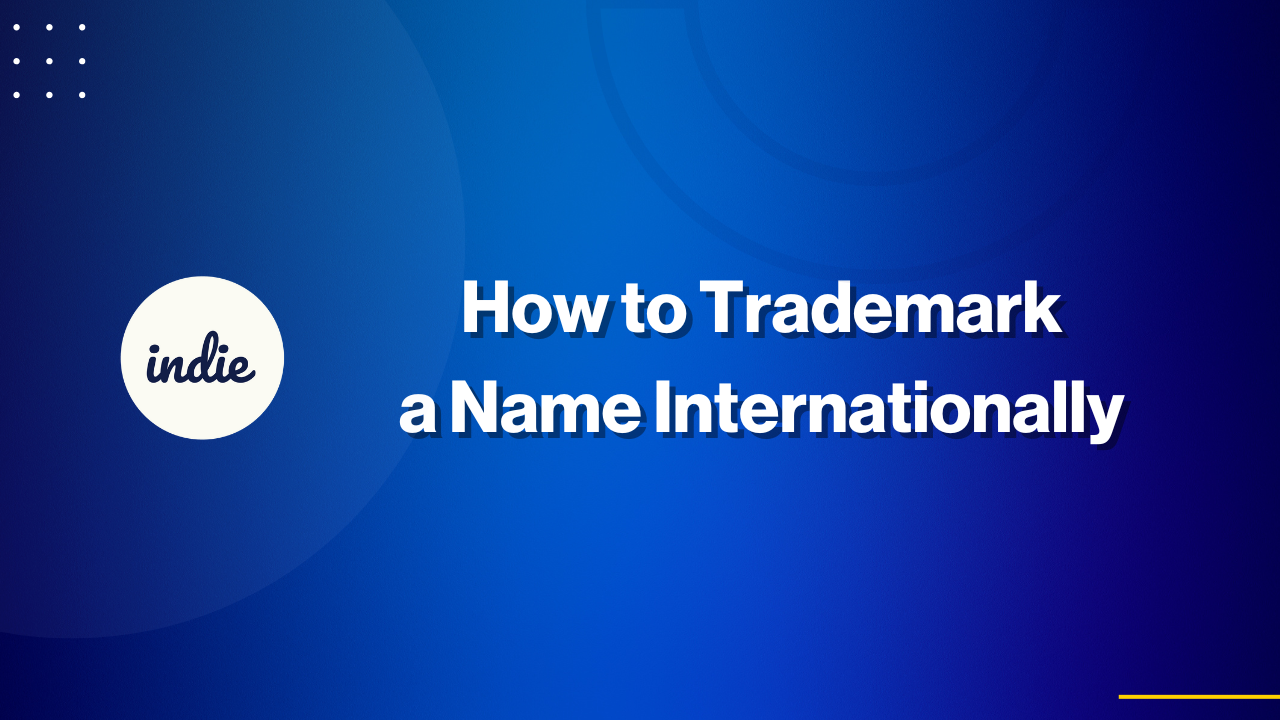According to the World Intellectual Property Organization (WIPO), international trademark applications have been steadily increasing, reflecting the growing need for global brand protection. In 2023 alone, over 73,000 international applications were filed under the Madrid System, WIPO’s international trademark registration system .
This guide will walk you through the process of trademarking your name internationally, helping you safeguard your brand as you expand into new markets.
Understanding International Trademark Protection
No “Global Trademark” Exists
It’s important to note that there is no single “global trademark” that provides worldwide protection. Trademark rights are territorial, meaning you must register your trademark in each country or region where you seek protection.Investopedia
Options for International Trademark Registration
There are two primary methods for securing international trademark protection:
- National Applications: File separate trademark applications directly with the trademark offices of each country where you want protection.
- Madrid System: Use WIPO’s Madrid System to file a single application that can extend protection to multiple member countries.WIPO
The Madrid System: Simplifying International Trademark Registration
The Madrid System, governed by the Madrid Protocol, offers a streamlined process for registering trademarks in multiple countries through a single application. As of 2025, the system includes 114 member countries, covering over 80% of world trade .
Benefits of the Madrid System
- Single Application: File one application in one language, and pay one set of fees.WIPO
- Cost-Effective: Reduces the need for multiple national applications, saving time and money.
- Centralized Management: Easily manage and renew your trademark registrations through WIPO.WIPO
Limitations
- Member Countries Only: The Madrid System only covers member countries. For non-member countries, you’ll need to file directly with their national trademark offices.WIPO
- Dependency on Basic Application: Your international registration is dependent on your basic application or registration in your home country for the first five years.
Step-by-Step Guide to Trademarking a Name Internationally
1. Conduct a Trademark Search
Before filing, ensure your desired trademark is available in each target country. Use databases like:WIPO
- WIPO Global Brand Database
- USPTO Trademark Search
A comprehensive search helps avoid conflicts with existing trademarks.
2. File a Basic Application in Your Home Country
To use the Madrid System, you must first have a registered trademark or a pending application in your home country. This is known as the “basic application.”
3. Submit an International Application via the Madrid System
Once you have a basic application, you can file an international application through your national trademark office, which will forward it to WIPO. You’ll designate the member countries where you seek protection.
4. Examination by Designated Countries
Each designated country’s trademark office will examine your application according to their national laws. They may approve, refuse, or request additional information.WIPO
5. Monitor and Maintain Your Trademark
After registration, monitor your trademark for potential infringements. Renew your registration as required—typically every 10 years.Trademarkroom
Common Challenges and How to Overcome Them
Language and Cultural Differences
Ensure your trademark doesn’t have unintended meanings or negative connotations in other languages or cultures. Conduct thorough research or consult local experts.WIPO
Varying Legal Requirements
Trademark laws differ across countries. Work with local attorneys or consultants to navigate specific legal requirements in each jurisdiction.
Enforcement Difficulties
Enforcing your trademark rights internationally can be complex. Establish a strategy for monitoring unauthorized use and be prepared to take legal action when necessary.
The Importance of International Trademark Protection
Failing to secure international trademark protection can lead to:
- Brand Dilution: Others may use similar names, weakening your brand’s identity.
- Legal Disputes: You may face legal challenges or be unable to prevent others from using your trademark.
- Lost Revenue: Counterfeiters and infringers can divert sales and damage your reputation.
The global trade in counterfeit goods is projected to reach $1.79 trillion by 2030, highlighting the critical need for robust trademark protection .OECD
Conclusion: Protect Your Brand Globally
Trademarking your name internationally is a vital step in safeguarding your brand as you expand into new markets. By understanding the available systems, conducting thorough research, and seeking professional guidance, you can navigate the complexities of international trademark registration effectively.
For more information and assistance, visit:
- WIPO Madrid System
- USPTO Madrid Protocol

